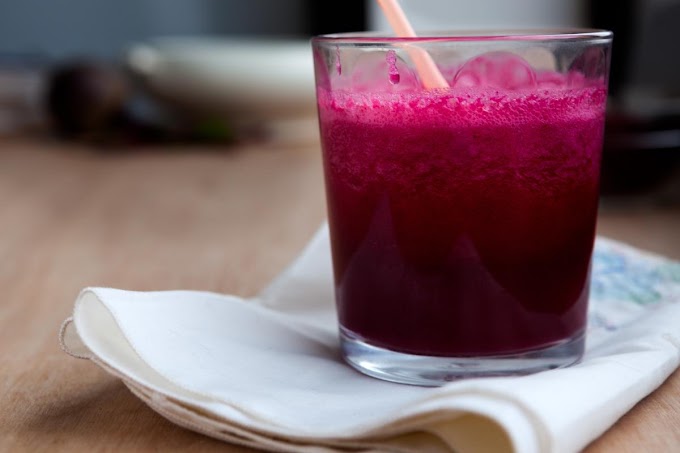1. Verjuice: The Versatile Grape Condiment
Verjuice is an ancient condiment made from the juice of unripe grapes. It was widely used in medieval European cooking and is still a popular ingredient in some regions today. Its sour flavor makes it an excellent substitute for vinegar or lemon juice. Historically, verjuice was often used in sauces, dressings, and marinades. It is especially popular in Middle Eastern and French cuisines. In Persian dishes, verjuice adds a tangy depth to stews and grilled meats, while in French gastronomy, it is often found in salad dressings or sauces to accompany fish and poultry.
2. Greek Grape Spoon Sweets (Glyko tou Koutaliou)
In Greece, grapes are often preserved in the form of "spoon sweets." These sweets, known as glyko tou koutaliou, are made by simmering whole grapes in a sugar syrup flavored with lemon juice, vanilla, or cinnamon. The result is a syrupy, jewel-like confection served on a spoon, often alongside a cup of Greek coffee or a glass of cold water. This method of preserving fruit allows the vibrant flavor of grapes to be enjoyed long after the harvest season. Grape spoon sweets are traditionally served to guests as a gesture of hospitality.
3. Raisin Pilaf (Iran)
Raisins, made by drying grapes, are a common ingredient in Middle Eastern and Persian cooking. One of the most traditional and beloved dishes featuring raisins is raisin pilaf. In Iran, rice is often mixed with raisins, saffron, nuts, and spices to create a fragrant, slightly sweet dish that balances savory and sweet flavors. Raisin pilaf is typically served alongside meat dishes, particularly lamb, or as a standalone vegetarian dish. The natural sweetness of raisins combined with the earthiness of saffron and crunch of nuts creates a delightful combination.
4. Italian Schiacciata con l'Uva
Schiacciata con l'Uva is a rustic grape bread from the Tuscany region of Italy, typically made during the grape harvest season in September and October. This flatbread combines fresh black grapes with sugar and olive oil, baked into a soft, sweet bread. Traditionally, wine grapes are used, which gives the bread a rich flavor. The sweetness of the grapes contrasts with the earthy olive oil, making for a unique treat that’s enjoyed as both a snack and dessert. Schiacciata con l’Uva is a wonderful representation of Tuscany’s culinary heritage and showcases the region's focus on simple, high-quality ingredients.
5. Grape Leaves (Dolma)
Grape leaves are a staple ingredient in Mediterranean and Middle Eastern cooking. One of the most famous dishes that utilize grape leaves is dolma, a dish that involves stuffing grape leaves with a mixture of rice, herbs, and sometimes ground meat. In Greek cuisine, dolmades are often vegetarian, with a lemony rice and herb filling, while in Turkish and Lebanese versions, minced lamb or beef may be added to the filling. Grape leaves lend a subtle tangy flavor to the dish, making it refreshing yet hearty. Dolma is typically served as a mezze (appetizer) alongside yogurt or tahini sauce.
6. Chicken with Grapes (France)
One of the most famous French dishes made with grapes is poulet aux raisins, or chicken with grapes. In this elegant dish, chicken is cooked in a white wine sauce with grapes, cream, and herbs. The grapes, both cooked and fresh, add a burst of sweetness that perfectly complements the richness of the sauce. This classic French recipe showcases the subtlety and complexity of grapes when paired with savory flavors. It is often served during the autumn months when grapes are in season, offering a delicious balance of sweet and savory elements.
7. Grape Moustalevria (Greece)
Moustalevria is an ancient Greek dessert made from grape must (the freshly pressed juice of grapes), flour, and nuts. This thick pudding-like dessert is traditionally prepared during the grape harvest, using freshly made grape must to create a sweet and tangy treat. Once the mixture is thickened, it is topped with walnuts, almonds, and cinnamon, creating a dish that's both rich and flavorful. Moustalevria has a long history in Greek cuisine, dating back to ancient times when grapes and grape must were integral parts of the diet.
8. Kishk el Firakh (Egypt)
In Egypt, grapes are used in a variety of ways, including as dried raisins in traditional dishes. Kishk el Firakh is an Egyptian chicken dish that incorporates bulgur wheat, chicken, yogurt, and raisins. The raisins provide a sweetness that balances the tang of the yogurt and the savory chicken. This dish is often served as part of festive meals or special occasions and reflects the ancient Egyptian tradition of combining dried fruits with grains and meats. The use of grapes in their dried form adds texture and flavor to this hearty dish.
9. Arrope (Spain)
Arrope is a traditional Spanish syrup made by slowly boiling down grape must until it thickens into a rich, dark syrup. Often infused with spices or fruits like figs and quinces, arrope has a deep, caramelized flavor and is used as a sweetener or drizzle in Spanish desserts. In the past, it was also used to preserve fruits, and it remains a traditional element in Spanish gastronomy today. Arrope is often enjoyed with cheese, ice cream, or drizzled over pancakes, highlighting the richness and complexity that cooked grapes can bring to a dish
10. Grape and Almond Tart (Spain)
Another Spanish classic is the grape and almond tart, a simple yet flavorful dessert made with fresh grapes and ground almonds. The sweet juiciness of the grapes pairs beautifully with the nutty flavor of the almonds, creating a light and refreshing dessert that is perfect for summer. The tart is often served with a dusting of powdered sugar or a drizzle of honey. This traditional Spanish dessert is a great way to showcase the natural sweetness of grapes and is often enjoyed with a cup of coffee or a glass of dessert wine.
Conclusion
Grapes, in all their forms—fresh, dried, cooked, or fermented—have a prominent place in the culinary traditions of many cultures. From the sweet verjuice of Persia to the savory dolmades of Greece, grapes have been a key ingredient for thousands of years. Whether used in rustic breads, elegant chicken dishes, or sweet desserts, grapes offer a unique flavor profile that can enhance both sweet and savory dishes. These traditional recipes not only celebrate the versatility of grapes but also highlight the rich culinary histories of the regions from which they originate.








Social Plugin